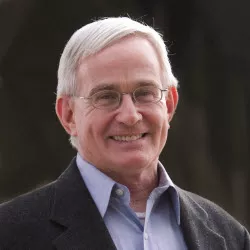
By Barbara Thornton
In 1994 when Tom Murphy became Mayor of Pittsburgh, the city had been in decline for 50 years. He looked at his assets:
- 300,000 residents (half of what it had been)
- Thousands of acres of empty or underutilized land
- A significantly below average cost of living index
- An entrepreneurial culture
- A tradition of charitable giving and private sector involvement in public sector capital investing
Also on his asset list: Carnegie Mellon University, the University of Pittsburgh Medical Center, research investments from D of D and the National Science Foundation, a state sponsored Advanced Technology Center providing seed funding to tech start-ups, an aging but substantial infrastructure and a city operating budget of about $377 million dollars (35% for public safety).
Murphy looked at his liabilities, too:
- 70% of the people who work in the city don’t live there
- A population that increased by over 130% during working hours
- Tax exemptions on 40% of the land area
- 25 of the 27 largest employers paid no business taxes
Liabilities also included: Key tax changes required state legislative approval, the underutilized land consisted of a lot of environmentally toxic gas stations and bankrupt steel mills -- now environmentally hazardous “brownfields.”
City at a tipping point
Murphy, moving from the state legislature to the Mayor’s office in 1994, sensed the city was at a tipping point and declared the city "Open for Business." Building on the tradition dating from the Mellon family’s influence in public sector capital investment, Murphy envisioned a public-private partnership where the public sector would use its authority and resources to build a strong platform for growth and development by the private sector.
He recruited a strong staff. They initiated a major balance sheet readjustment. They shifted $6 million a year from the operating budget to finance a $60 million development fund. They cut the police operating budget substantially while cutting crime by 50% with better management, initiated new Tax Increment Financing (TIFs) districts, directed the Urban Redevelopment Authority to acquire and convert over 1,500 acres of blighted properties into taxable commercial properties, tapped the county Regional Asset District’s (RAD’s) 1% sales and use tax among 24 other sources to build two stadiums and a convention center. The goal was to get money, land control and sophisticated deal making capacity in one place.
The private sector no longer expected direct tax relief but instead expected a functional city producing well-educated potential employees in an attractive and well-maintained environment that was an increasingly desirable place for their employees to live.
Partnering for a healthier future
The pattern of public-private collaboration set in motion in the 1940s made possible the effective public-private collaboration in the 1990s. The city looked aggressively for deals and partners. What would help business, industry and the growing technology and biotech industries? What land, approvals, facilities, future employees could the city bring to the table? Taking funds out of city operations and investing them in potential future land development was a radical step but emblematic of the push to convert city assets to a new healthier future and to re-envision the city’s liabilities.
By 2009 the partnership was paying off. The region experienced the first net population increase since the 1950s. It was designated as the most livable city in America. And while unemployment peaked at 17.1 % by the end of the 1982 recession (compared to 10.8% nationally), by the 2001 recession unemployment was lower (5.7%) than the national average (6.3%). In 2012, PNC Bank committed to a new $400 million building for about 3,000 PNC employees. Key entities like Carnegie-Mellon and the University of Pittsburgh Medical Center continue to thrive, grow and generate new businesses.
Replicating the Pittsburgh model
What is the recipe for repeating this public-private partnership model?
- Be clear about your assets and liabilities
- Be firm but collaborative with your private sector to understand their needs.
- Have a sophisticated, entrepreneurial staff on the public side of the negotiations
- Focus on long-term asset improvement
- Have the capacity on the city side to develop long-term, complex financial deals
Barbara Thornton, founder and CEO of Asset Stewardship, consults on and writes about finance, operations and infrastructure issues, with a particular expertise in the adoption of digital infrastructure, facing 21st century municipalities. She brings over 20 years of professional experience, degrees in city planning and business administration and special training in software, social media and in strategic facilitation.



